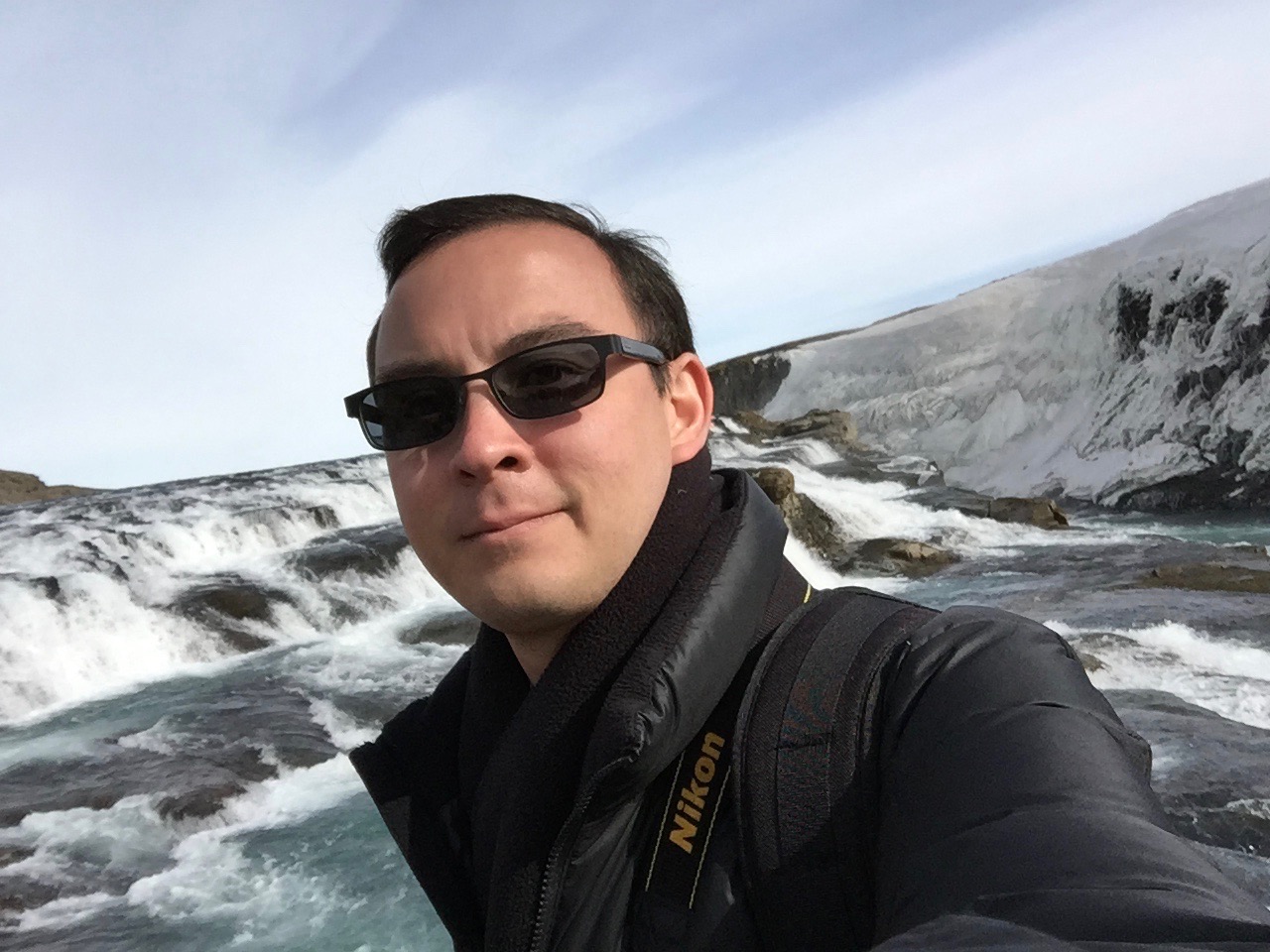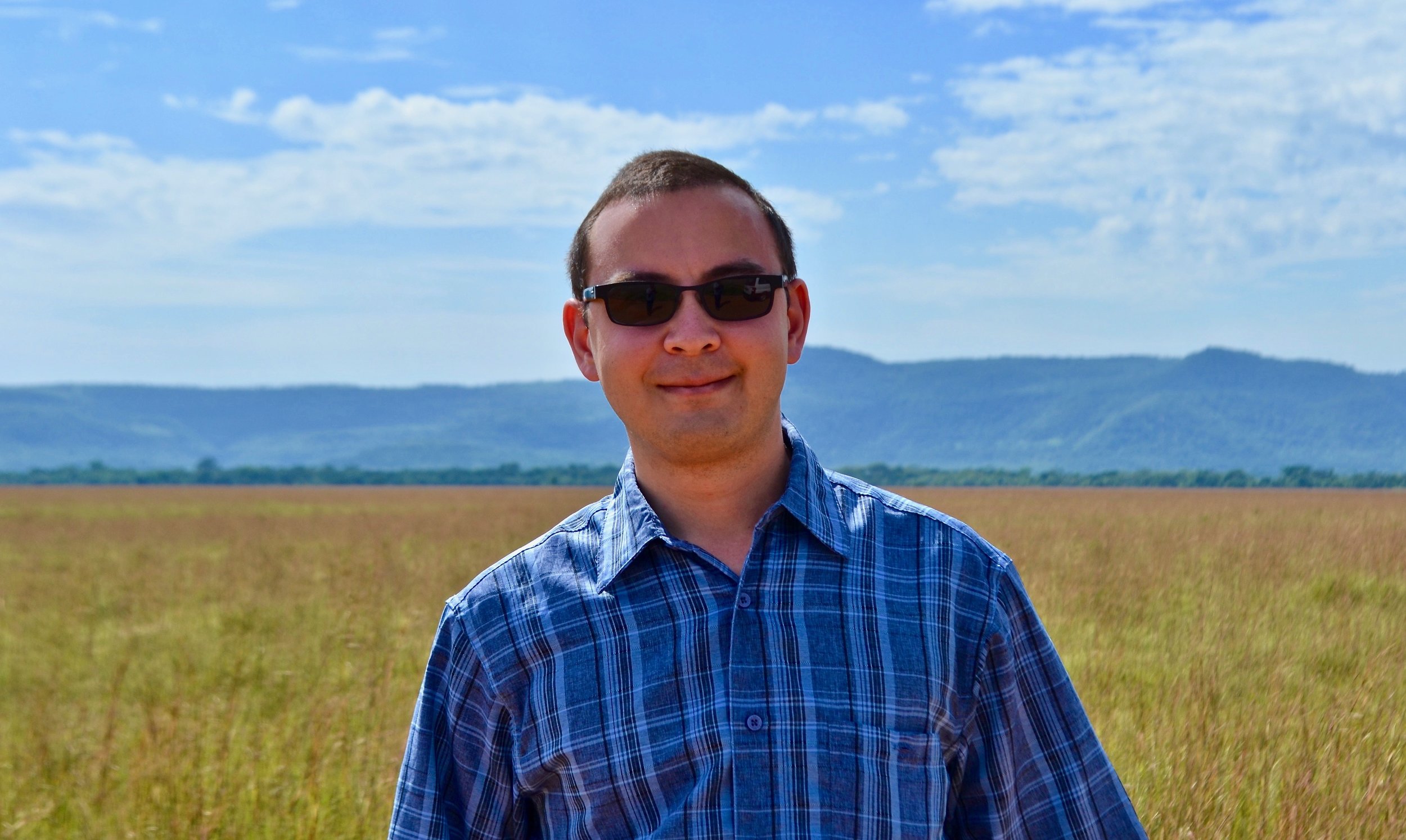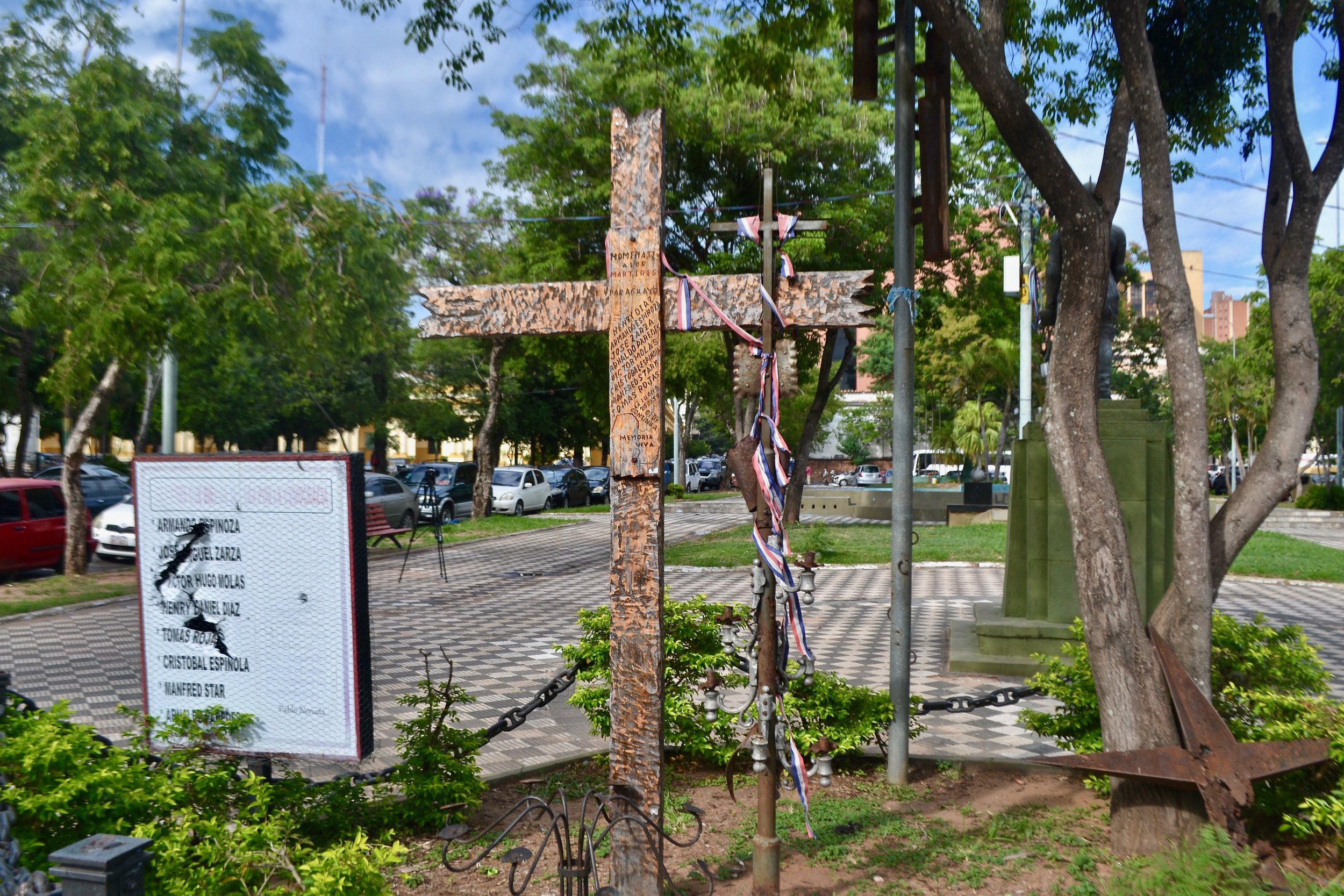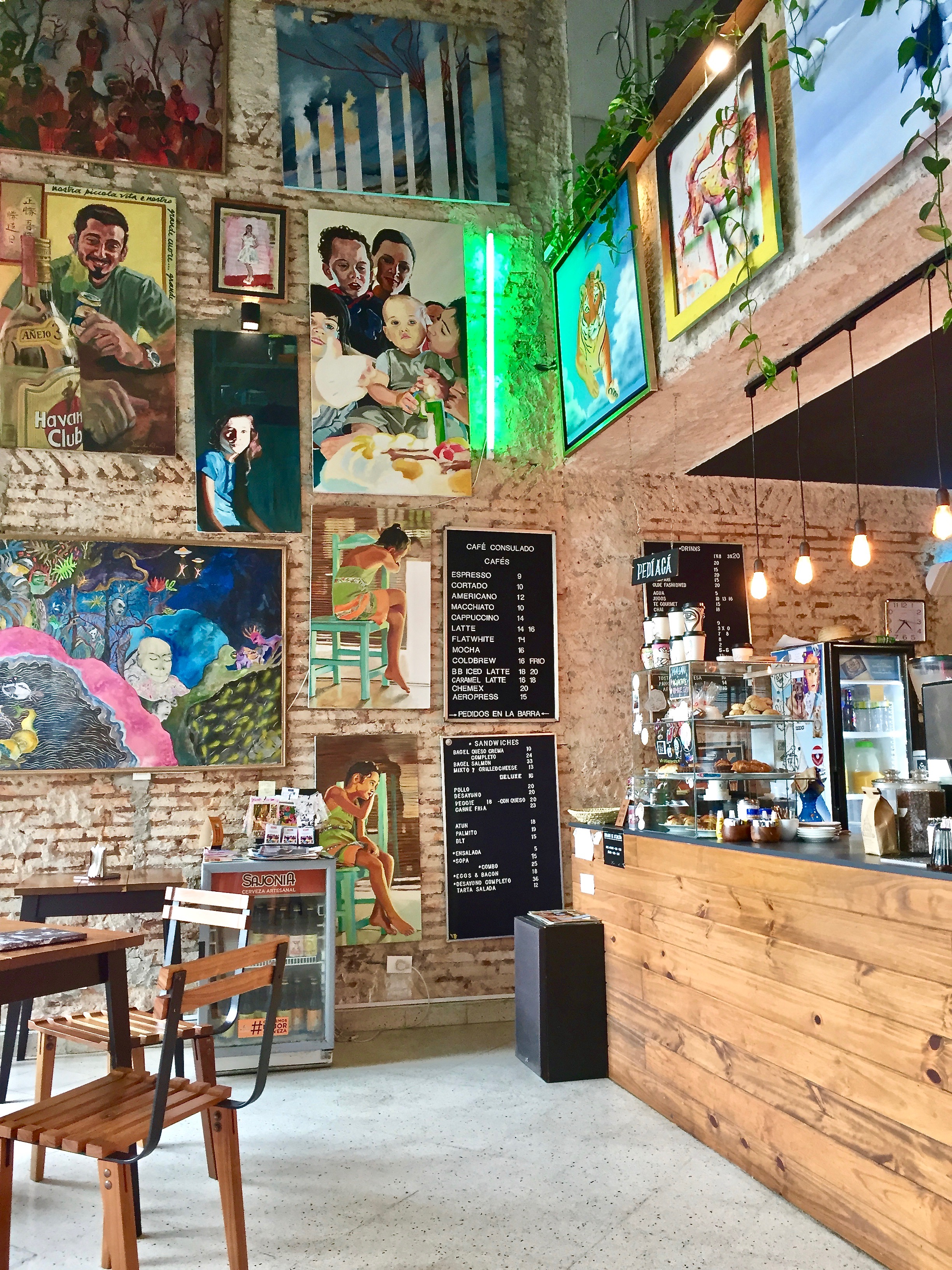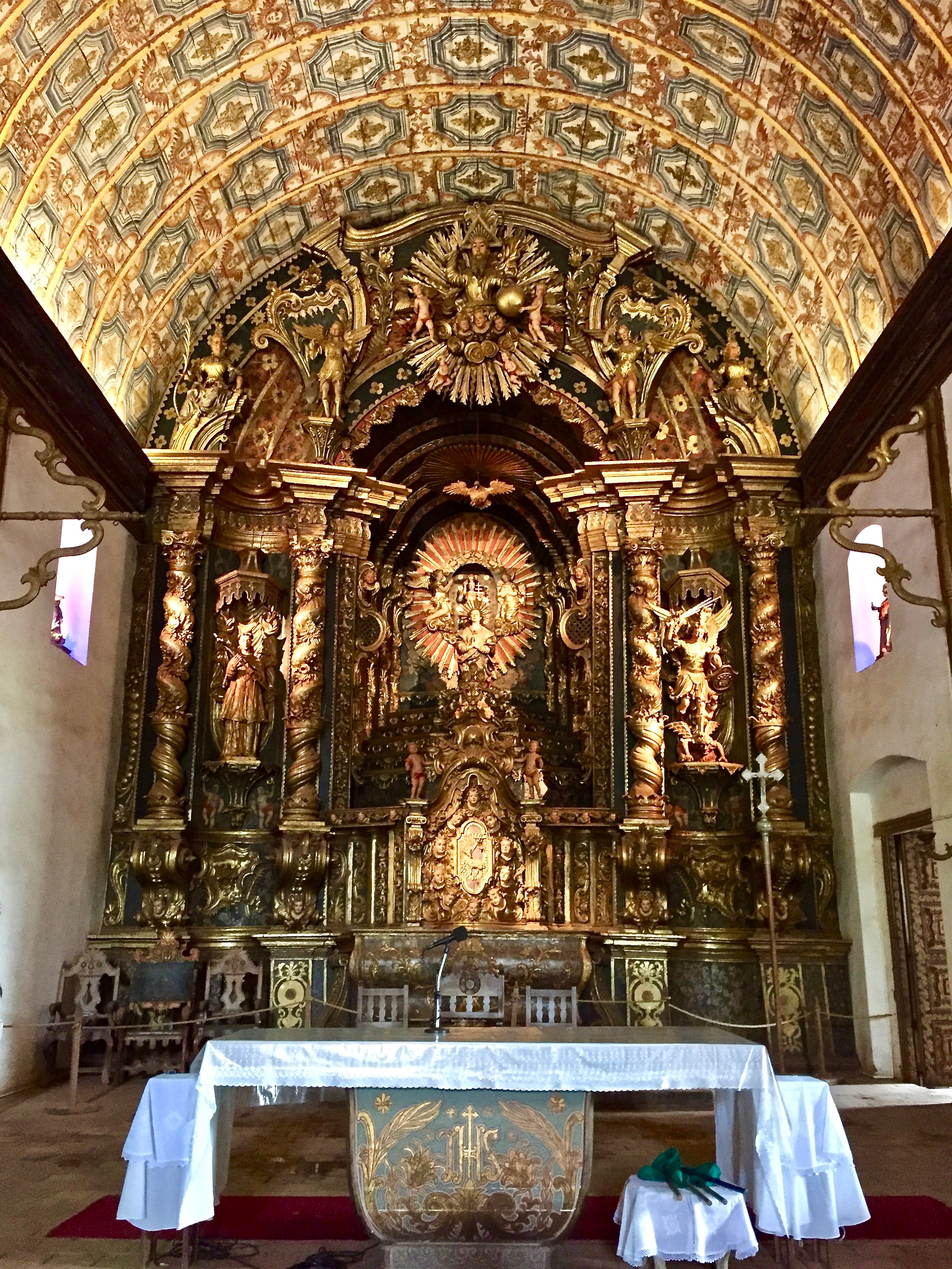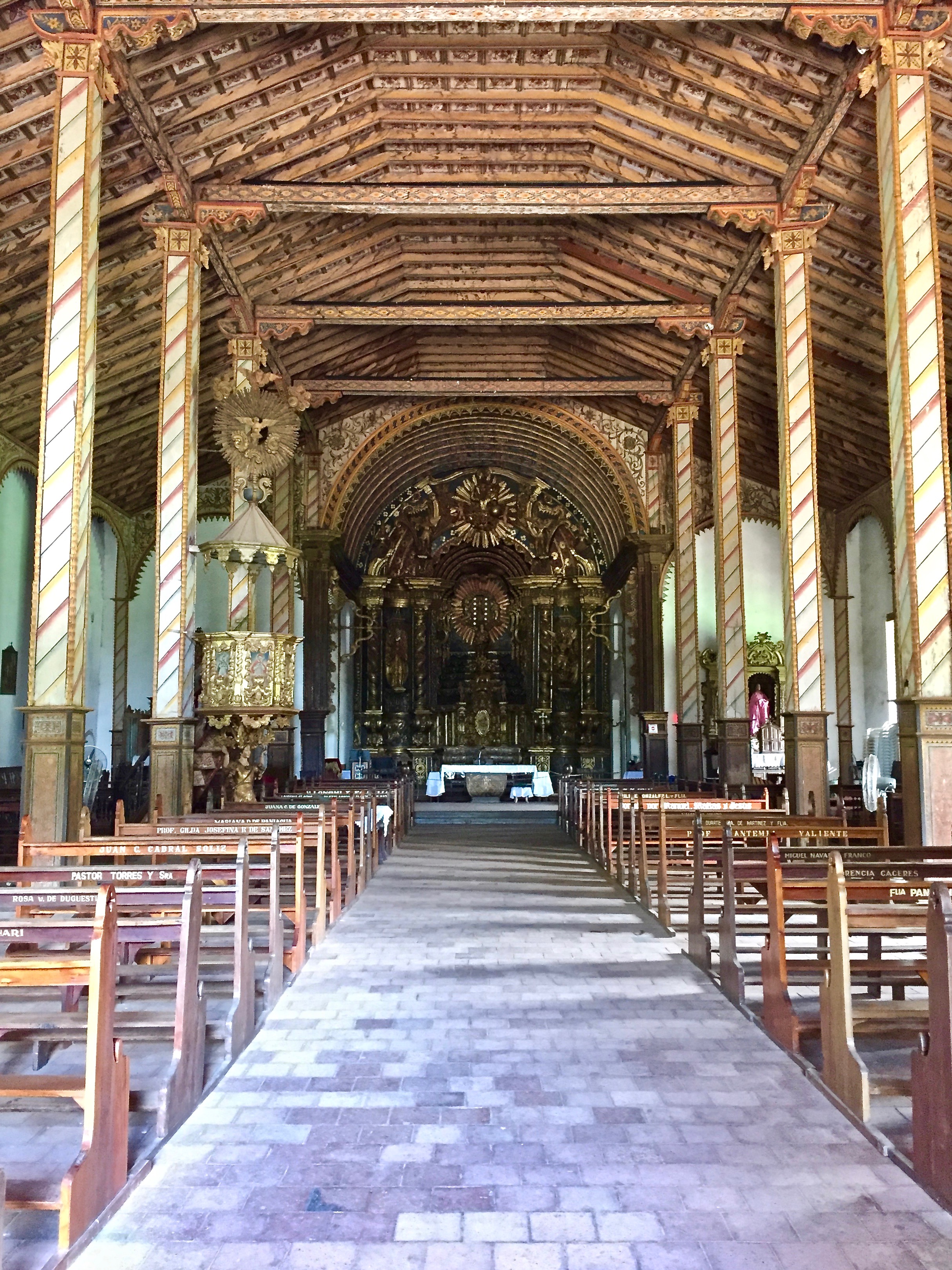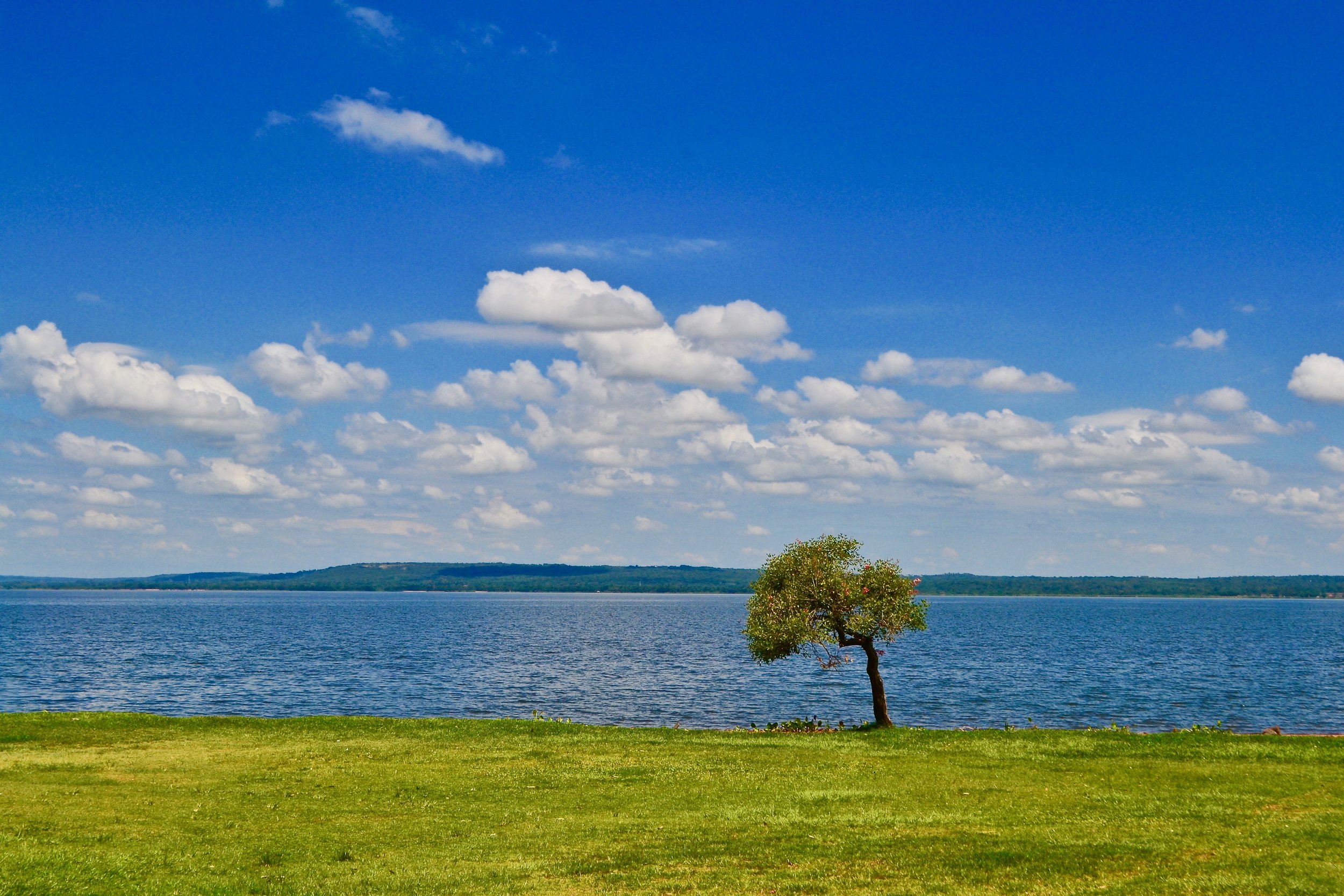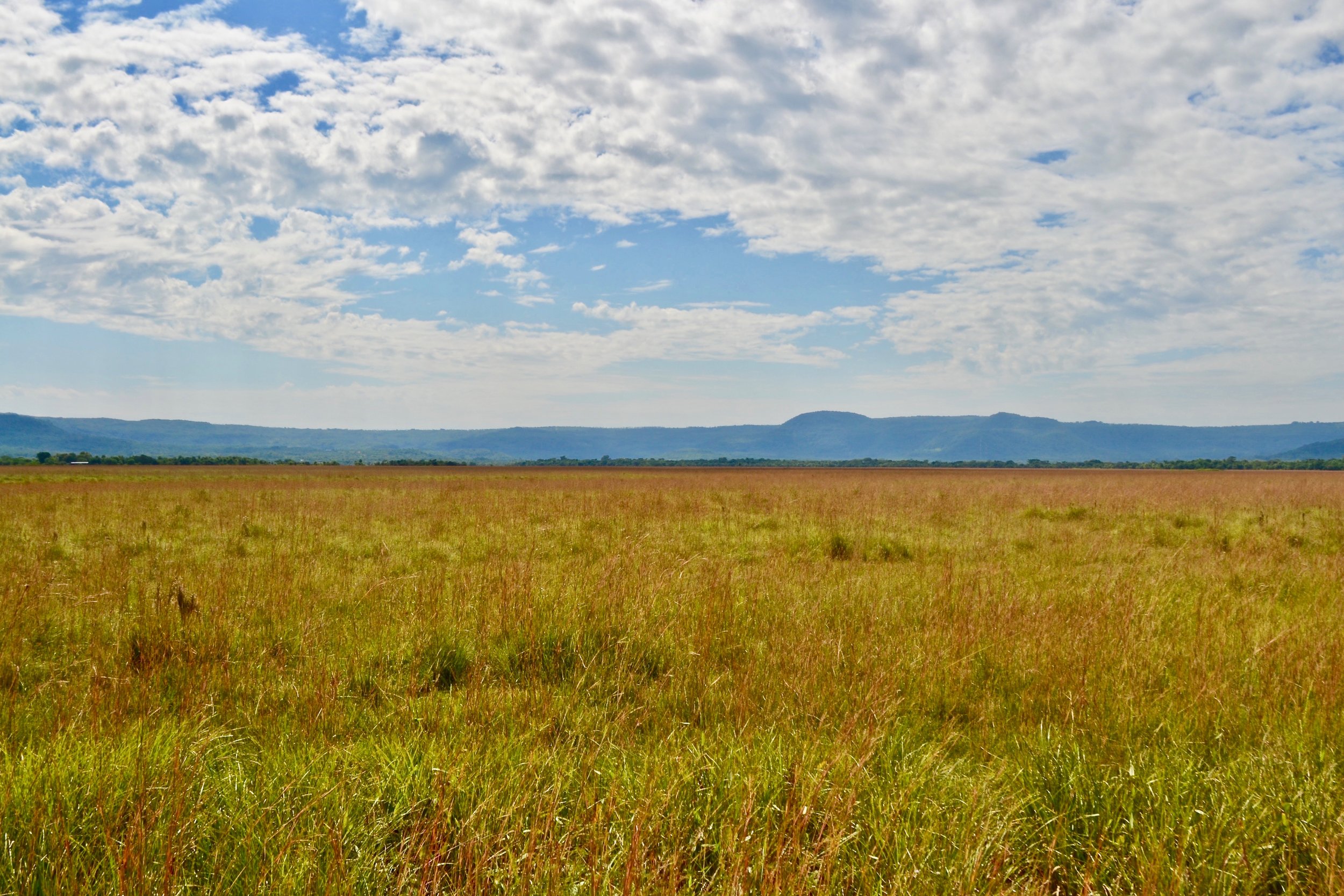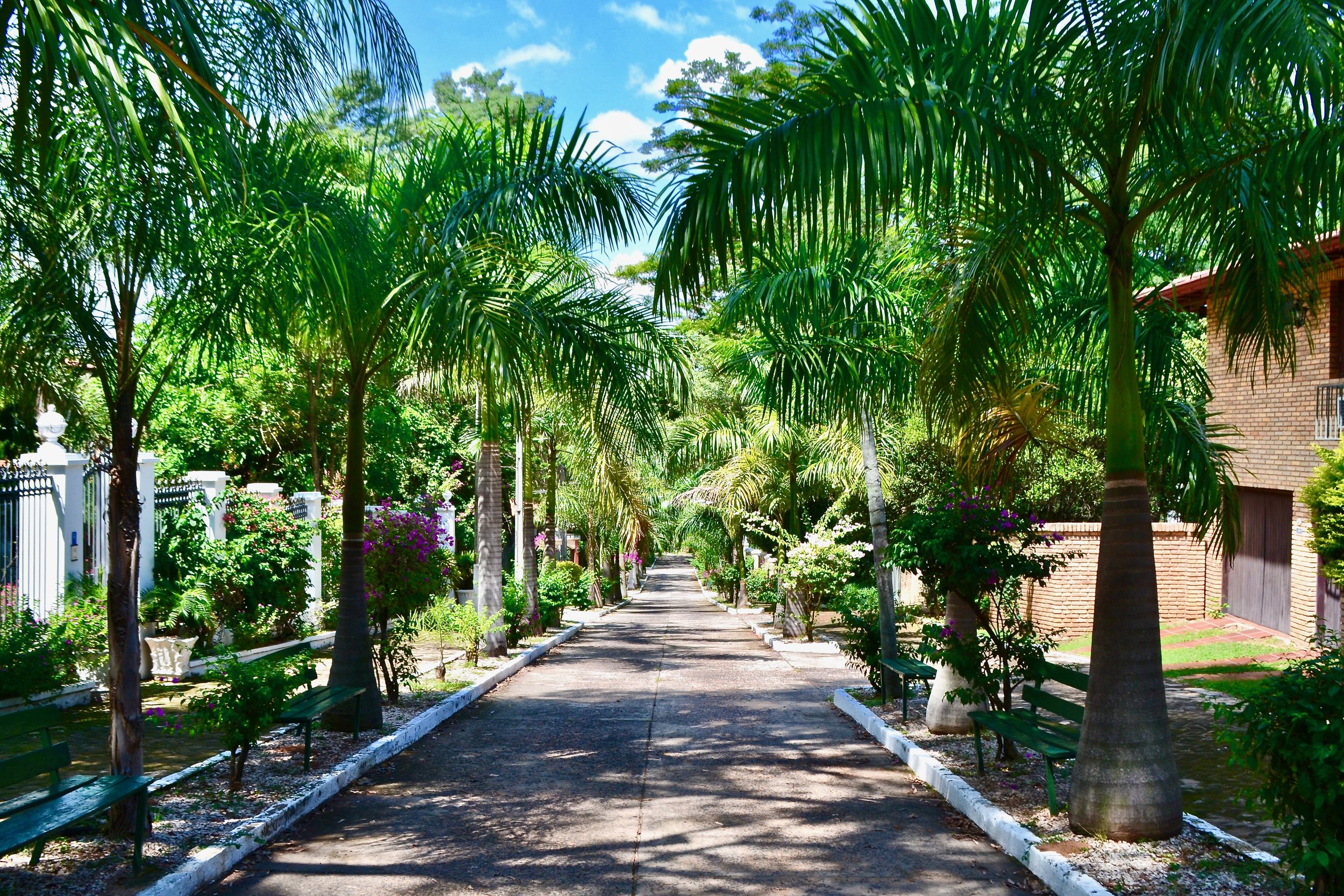A Visit to Paraguay
South America is a very popular place to visit. After all, it has a very rich history and a huge number of important archaeological sites. However, unlike the more popular countries of Peru, Colombia, Argentina, and Chile, there are a small number of other countries on the continent that many people do not visit as much. Paraguay is one of them.
Yet, despite not being as heavily frequented by tourists as its more wealthy neighbors, Paraguay is starting to appear on more people's radars as a place to possibly relocate and move to as expats because of its easy residency requirements and low cost of living. For those who are interested in what it is like to live in Paraguay as an expat, please check out my interview with an expat and friend who currently lives in Paraguay. This blog entry is more about my experience as a visitor, but it can definitely give a potential expat an idea of what Paraguay is like.
A view of Asuncíon, Paraguay
For my first, and thus far, only visit to South America, I made it a point to visit Paraguay since it was seemingly a country that everyone always skipped over in favor of more popular ones. I was determined not to skip it.
Like many of the other countries of the Southern Cone of South America, I didn't really know anything about Paraguay or its history. The only thing I knew was that it was considered to be one of the least economically-developed countries in South America and was led by the dictator, Alfredo Stroessner, for 30 years.
During my South American trip, I first spent time in Argentina and then headed off to Uruguay. From Uruguay, I flew on Amaszonas from Montevideo, Uruguay to Asuncíon, Paraguay. Even though many people I have talked to have not been enthused with Amaszonas' service, I thought the flight was fine since it departed and arrived on time, the seats were surprisingly comfortable, and my luggage did not get lost. In addition, the flight time was quite reasonable at a little over an hour and a half.
Upon arrival in Paraguay at Silvio Pettirossi International Airport (Aeropuerto Internacional Silvio Pettirossi), I was the only person on the flight who needed a visa. However, it is possible to get a visa on arrival for US citizens. I went up to the visa desk and had to pay $160 USD for a visa that is valid for 10 years. For anyone who is thinking of traveling to Paraguay in the future, it is important to make sure to have brand new and crisp bills that have no wrinkles, creases, tears, or ink blots otherwise the immigration officials may not accept them. It is also important to note that credit cards are not accepted for payment, so it is imperative to have US dollars. Prior to arrival in Paraguay, I actually went through my money to find bills that fit the stringent standards. In my case, I had been told ahead of time by my expat friend who lives in Paraguay to make sure the money was brand new.
Nuestra Señora de la Asuncíon
Once I paid the fee, I went to the immigration desk, got my passport stamped, and then proceeded to the currency exchange to get some Paraguayan guaraníes. Once I was ready to go, I hailed a taxi and headed to the Hotel Guarani Esplendor, which is located in a prime area of Asuncíon and located close to many historic sites, such as the Metropolitan Cathedral of Nuestra Señora de la Asuncíon and La Casa de la Independencia.
The hotel itself was quite nice, and I had a room on a high floor. The only issue was that the room I had was rather small since the room's furniture was too big. This made it somewhat difficult to move around. In addition, the whole building is covered in a blind-like architectural frame, so it is not really possible to get nice panoramic views of the city from high up since the views are usually blocked. However, despite the small size of the room and lack of view because of architectural details, it did not matter to me too much since I didn't plan to spend much time there anywhere. For me, the one big plus of the hotel was the daily breakfast. There was always a large variety of hot and cold food, and I probably ate my weight in bacon each day.
Prior to my arrival in Paraguay, I had notified my friend that I would be in the area, so we arranged to meet up after I got settled in, and he finished work. Before meeting up, I did some brief exploration of the surrounding area, and the thing that immediately hit me was the humidity. The humidity was quite heavy, and it was not long before I was sweating. Even though I was doing some brief exploring to get my bearings, I also needed to find a bank since I needed some more Paraguayan currency. I had only exchanged just enough for a taxi from the airport to the hotel.
Luckily, there were several banks in the immediate area, so I went into one and stood in line to wait my turn. While waiting, I thought of what I wanted to say. I have extremely basic Spanish skills, and most of it is just a holdover from what I had learned in high school almost 20 years ago. When it was finally my turn, I went up to the teller and requested Paraguayan guaraníes in my best Spanish. When the teller saw my US dollars, she understood what I wanted, did the exchange, and said almost nothing. The process was simple, required little communication, and that was fine with me.
View of Downtown Asuncíon
Once I had more Paraguayan guaraníes, I continued to explore the immediate area for a bit before returning to the hotel.
Right in front of the Hotel Guaraní is a large square, the Plaza de la Libertad. This particular plaza houses the National Pantheon of the Heroes, which holds the remains of various notable figures in Paraguayan history including military heroes and a couple unknown soldiers that were killed in various wars that Paraguay was involved in. Unfortunately, the Pantheon was under renovation and covered in scaffolding, so it was not able to be seen at all. Aside from the National Pantheon of the Heroes, throughout the square were many different stalls that sold food but also various kinds of souvenirs, such as magnets, handmade purses, and other miscellaneous items, so it was not difficult to find souvenirs for friends and family. After exploring for a bit, I headed back to the hotel to rest since the humidity took the energy out of me.
A couple hours later after some rest, I met up with my friend in the hotel lobby, and we spent the next several hours walking around the city, catching up, and getting something to eat at a local and rather hip cafe which I would have never thought of going into on my own. My friend speaks Spanish, so when it came to order, I had someone to help me and correct my Spanish grammar and vocabulary. After getting something to eat, we headed back to his apartment and hung out for a bit. During the time we were chatting, it was clear that my friend really enjoyed living in Paraguay, and that got me thinking about the possibility of one day moving to Paraguay as an expat. Even though I currently live in the Middle East, it would be a nice change of scenery. After all, the country seemed quite safe, and it was certainly not expensive like some of its neighbors, such as Chile, Argentina, or Uruguay. In addition, it seemed the pace of life was slower here and more relaxed. However, the humidity would require some getting used to.
Museo Ferroviario in Asuncíon
Since my friend still had to work each day, I had a couple days to myself to do some exploring. During my first full day, I explored more of the city and checked out some of the sites, such as the Museo Ferroviario, which provided a fascinating insight into Paraguay's now defunct railway line. The museum had an antique steam engine, passenger car, and several rooms filled with various railroad memorabilia and photos.
I also paid a visit to the Casa de la Independencia Museum. This museum is interesting since it tells the history of the independence of Paraguay in the early 19th century. In addition, the building has also played a pivotal role in the history of Paraguay's independence. Aside from telling the story of independence, the museum also gives a visitor of idea of what life was like in colonial Paraguay since it has various items and furniture, including the bed of one of the founding fathers of Paraguay.
However, while I enjoyed exploring Asuncíon, I really wanted to check out more of the country. Unfortunately, since my Spanish is seriously lacking, I did not feel comfortable trying to take a day trip on my own. Instead, I searched for some tour companies that were willing to do day trips to other parts of the country.
Originally, I had a day trip planned to go into the Gran Chaco, which is something of a desolate and sparsely populated hinterland that is known for its vegetation. Unfortunately, the tour company contacted me a few days before to notify me that the tour would only be conducted in Spanish even though I had requested English. Initially, I thought this would be a great opportunity to improve my listening skills and maybe even communication skills. However, the more I thought about it, the more I realized that my Spanish abilities were far too low to gain any benefit from that. Instead, I spent several hours during my first day in Paraguay trying to find a tour company that would be willing to day tours scheduled for the next day since my time was quite limited.
This proved to be a little bit difficult at first. Most of the tour companies I came upon only scheduled multi-day tours. However, I eventually did find a company that would take me on a day tour of the Circuito de Oro, which is the area surrounding Asuncion, and which has significant historical sites. After quickly making contact with the company, I had managed to book a day trip for the very next day.
Iglesia de San Buenaventura in Yaguarón
On the day of the tour, I met my tour guide in the hotel lobby, and we set off together.
The first stop we made was at the Church of San Buenaventura in Yaguarón. This church is famous for being the oldest in Paraguay since it dates to the 17th century. From the exterior, the church did not look particularly impressive. However, the interior altar (see photo gallery at bottom) was highly decorated, ornate, and handmade. It reminded me of a church altar one would typically see in a 17th century church in Europe. While the church itself has an interesting history, I also learned that Yaguarón was the birthplace of the first leader of Paraguay, José Gaspar Rodriguez de Francia, who led Paraguay from 1814 to 1840.
We also visited several other sites, such as the basilica in Caacupé, and the guide showed me some of rural Paraguay. We also stopped in the town of San Bernardino, which is a resort town near the shores of Lake Ypacaraí. Because it was no longer tourist season, the area was very quiet and almost deserted. This was fine with me since it allowed me to get some good photos without people stepping into the frame. However, it would have been easy to see the area being packed with locals and visitors during the high season with all kinds of water sports taking place on the lake.
Ypacaraí Lake near San Bernardino
After returning from the tour, I came back to the hotel for a rest. That evening, I met up with my friend again for a final dinner. After we bid farewell to each other, I headed back to the hotel and started to pack for my early morning flight to Santiago, Chile.
Overall, Paraguay was a surprise for me. It was significantly different from what I saw in Argentina and Uruguay. It certainly was not as cosmopolitan or Europeanized as Argentina or Uruguay. In fact, my time in Paraguay reminded me more of a Central American country in terms of the climate and pace of life, but I can definitely see why it is becoming a popular place for expats to relocate to. It was not expensive at all, and I can easily see how someone can have a good life here without having to spend huge amounts of money each year.
Please enjoy this small photo gallery. All photos were taken by me using a DSLR and iPhone. Please note that at this time, my DSLR camera was not working properly, so I did not take very many pictures.
